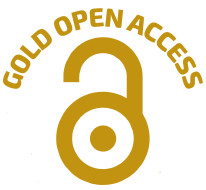The influence of social media in the second round of the 2021 Ecuadorian presidential elections
DOI:
https://doi.org/10.5281/zenodo.14167034Keywords:
political communication, social media, netnography, electoral campaigns, digital strategiesAbstract
This study analyzes the use of social media in political communication during the second round of the 2021 Ecuadorian presidential elections, highlighting the increasing importance of these platforms in campaign strategies. The objective was to investigate how candidates Andrés Arauz and Guillermo Lasso utilized social media (Twitter, Instagram, TikTok, and YouTube) and assess their user interaction and response effectiveness. The methodology employed was a mixed descriptive approach based on a netnographic analysis, which allowed observation and comparison of the candidates' activity from March 16 to April 8, 2021. The findings show that Arauz stood out on Twitter due to his high level of activity and interaction. At the same time, Lasso excelled on Instagram, TikTok, and YouTube, achieving higher engagement and views. Differences in user response suggest the importance of tailoring political communication strategies to the particular characteristics of each platform, demonstrating that not only the quantity but also the relevance of content is crucial for capturing attention and fostering audience engagement. The conclusions underscore the need to design effective multichannel strategies that align with the habits and expectations of digital audiences, solidifying social media as an essential tool for mobilization and connecting with the electorate in the contemporary era.
Downloads
References
Brown, S., Kozinets, R. V., & Sherry, J. F., Jr. (2003). Teaching old brands new tricks: Retro branding and the revival of brand meaning. Journal of Marketing, 67(3), 19-33. https://doi.org/10.1509/jmkg.67.3.19.18657
Catterall, M., & Maclaran, P. (2002). Researching consumers in virtual worlds: A cyberspace odyssey. Journal of Consumer Behaviour: An International Research Review, 1(3), 228-237. https://doi.org/10.1002/cb.68
Conexión ESAN. (2020). ¿Cómo influyen las redes sociales en la comunicación política? | Conexión ESAN. https://www.esan.edu.pe/conexion-esan/como-influyen-las-redes-sociales-en-la-comunicacion-politica
Crespo, I., Carletta, I., Garrido, A., & Riorda, M. (2021). Manual de comunicación política y estrategias de campaña: Candidatos, medios y electores en una nueva era. Editorial Biblos.
Dader, J., & Cheng, L. (2011). Análisis cuantitativo cualitativo de las web de partidos. En V. F. Sampedro (Coord.), Cibercampaña. Cauces y diques para la participación. Las elecciones generales de 2008 y su proyección tecnopolítica (pp. 129-143). Editorial Complutense S.A.
De Valck, K., Van Bruggen, G. H., & Wierenga, B. (2009). Virtual communities: A marketing perspective. Decision Support Systems, 47(3), 185-203. https://doi.org/10.1016/j.dss.2009.02.008
Gelpi, R. (2018). Política 2.0: las redes sociales (Facebook y Twitter) como instrumento de comunicación política. Estudio: caso Uruguay [Doctoral dissertation, Universidad Complutense de Madrid]. https://eprints.ucm.es/id/eprint/49515/1/T40361.pdf
Giesler, M. (2006). Consumer gift systems. Journal of Consumer Research, 33(2), 283-290. https://doi.org/10.1086/506309
Gutiérrez-Rubí, A. (2015). La transformación digital y móvil de la comunicación política. Editorial Ariel, S.A.
Kemp, S. (11 de Febrero de 2021). Digital 2021: Ecuador. https://datareportal.com/reports/digital-2021-ecuador
Kozinets, R. V. (1997). I Want To Believe: a Netnography of The X-Philes' Subculture of Consumption. Advances in Consumer Research, 24(1), 470-475.
Kozinets, R. V. (2001). Utopian enterprise: Articulating the meanings of Star Trek's culture of consumption. Journal of Consumer Research, 28(1), 67-88. https://doi.org/10.1086/321948
Kozinets, R. V. (2002). The Field Behind the Screen: Using Netnography for Marketing Research in Online Communities. Journal of Marketing Research, 39(1), 61-72. https://doi.org/10.1509/jmkr.39.1.61.18935
Kozinets, R. V. (2006). Netnography 2.0. In R. W. Belk, Cheltenham, UN and Northampton (ed.) Handbook of qualitative research methods in marketing (129-142). Edward Elgar Publishing.
Kozinets, R. V., & Handelman, J. M. (1998). Ensouling consumption: A netnographic exploration of the meaning of boycotting behavior. Advances in Consumer Research, 25(1), 475-480. https://www.semanticscholar.org/paper/Ensouling-Consumption%3A-a-Netnographic-Exploration-Kozinets-Handelman/a5348b96ec70635eb9c35a0c604e370685c11fa9
Kushin, M. J., & Kitchener, K. (2009). Getting political on social network sites: Exploring online political discourse on Facebook. First Monday, 14(11). https://doi.org/10.5210/fm.v14i11.2645
Langer, R., & Beckman, S. C. (2005). Sensitive research topics: netnography revisited. Qualitative Market Research, 8(2), 189-203. https://doi.org/10.1108/13522750510592454
López, M., & Cabrera, T. (2014). Campaña política a través de redes sociales. ComHumanitas: Revista Científica De Comunicación, 5(1), 65-72. https://doi.org/10.31207/rch.v5i1.56
Maarek, P. J. (1995). Political marketing and communication. John Libbey & Company.
Miquel-Segarra, S., López-Meri, M., & Viounnikoff-Benet, N. (2020). Engagement entre políticos y seguidores en Facebook. El caso de las elecciones generales de 2016 en España. Obra Digital: revista de comunicación, (19), 61-79. https://doi.org/10.25029/od.2020.251.19
Muñiz, A. M., Jr., & Schau, H. J. (2005). Religiosity in the Abandoned Apple Newton Brand Community. Journal of Consumer Research, 31(4), 737–747. https://doi.org/10.1086/426607
Muñiz, A. M., O'Guinn, T. C., & Community, B. (2001). Journal of Consumer Research, 27(4), 412–432. https://doi.org/10.1086/319618
Ochoa, O. (1999). Comunicación política y opinión pública. McGraw-Hill.
Owen, D. (2019). La última década y el futuro de la comunicación política: la hegemonía de las redes sociales. En ¿Hacia una nueva Ilustración? Una década trascendente (pp. 347-365). OpenMind/BBVA.
Rokka, J. (2010). Netnographic inquiry and new translocal sites of the social. International Journal of Consumer Studies, 34(4), 381-387. https://doi.org/10.1111/j.1470-6431.2010.00877.x
Rokka, J., & Moisander, J. (2009). Environmental dialogue in online communities: negotiating ecological citizenship among global travellers. International Journal of Consumer Studies, 33(2), 199-205. https://doi.org/10.1111/j.1470-6431.2009.00759.x
Sandlin, J. A. (2007). Netnography as a consumer education research tool. International Journal of Consumer Studies, 31(3), 288-294. https://doi.org/10.1111/j.1470-6431.2006.00550.x
Tahan, R. (2016). Redes sociales para la participación cívica y política de estudiantes de la Universidad Católica Andrés Bello. Comunicación: estudios venezolanos de comunicación, (173), 113- 121. https://dialnet.unirioja.es/servlet/ejemplar?codigo=439380&info=open_link_ejemplar
Turpo, O. W. (2008). La netnografía: un método de investigación en Internet. EDUCAR, 42, 81-93. https://www.redalyc.org/pdf/3421/342130831006.pdf
Wolton, D. (1995). La comunicación política: construcción de un modelo. En J. M. Ferry (ed.), El nuevo espacio público. Editorial Gedisa.
Xun, J., & Reynolds, J. (2010). Applying netnography to market research: The case of the online forum. Journal of Targeting, Measurement and Analysis for Marketing, 18, 17-31. https://doi.org/10.1057/jt.2009.29
Zhang, W., Johnson, T. J., Seltzer, T., & Bichard, S. L. (2010). The revolution will be networked: The influence of social networking sites on political attitudes and behavior. Social Science Computer Review, 28(1), 75-92. https://doi.org/10.1177/0894439309335162
Downloads
Published
Data Availability Statement
The datasets used and/or analyzed during the current study are available from the corresponding author on reasonable request.
Issue
Section
License
Copyright (c) 2025 Cesar E. Andraus, Orlando R. Lazo, Rauny J. Limonta, John D. Daza (Autor/a)

This work is licensed under a Creative Commons Attribution-NonCommercial-ShareAlike 4.0 International License.























